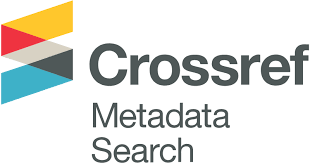Studying and analyzing the impact of upgrading the Elekta Preces Linear accelerator on the percentage depth dose parameters.
DOI:
https://doi.org/10.58916/jhas.v8i5.126Keywords:
PDD, MLC, SH collimator, surface dose, Elekta Preces Linac.Abstract
The delivery of an accurate radiation dose to the tumor site, and thus the success of radiation treatment, depends on the accuracy of measurements of the radiation parameters. Therefore, this paper aimed to study and analyze the impact of upgrading the Electa Preces linear accelerator installed at the Radiotherapy department at Tripoli University Hospital, Tripoli, Libya, from a standard head collimator to a multileaf collimator on percentage depth dose (PDD) parameters for 6 MV and 15 MV photon beam energies at various field sizes and depths. The measurements in this study were carried out using a PTW MP3-M 3D water scanning system, and the acquired data were processed using MEPHYSTO mc2 navigation software (PTW, Freiburg) version 1.6. The results of this paper showed considerable variations between the majority of parameters of PDD. The highest relative differences between the measured PDD pre- and post-upgrade were observed in the build-up region. The highest value recorded was 16.69% for 6 MV photon beam energy. Additionally, the relative deviation of surface dose reached 9.27% for photon beam energy. Therefore, recommissioning the collected data, which is used in the treatment planning system to evaluate dose distribution in patients, is needed and strongly recommended.
Downloads
References
A lmond, P. R., Biggs, P. J., Coursey, B. M., Hanson, W. F., Huq, M. S., Nath, R., & Rogers, D. W. (1999). AAPM's TG-51 protocol for clinical reference dosimetry of high-energy photon and electron beams. Medical physics, 26(9), 1847–1870.
Brahme A. (1984). Dosimetric precision requirements in radiation therapy. Acta radiologica. Oncology, 23(5), 379–391.
Buzdar, S. A., Rao, M. A., & Nazir, A. (2009). An analysis of depth dose characteristics of photon in water. Journal of Ayub Medical College, Abbottabad : JAMC, 21(4), 41–45.
Dutreix A. (1984). When and how can we improve precision in radiotherapy?. Radiotherapy and oncology : journal of the European Society for Therapeutic Radiology and Oncology, 2(4), 275–292.
D utreix, B., Bjarngard, E., Bridier, A., et al., (1997). Monitor unit calculation for high energy photon beams. ESTRO Booklet 3, Garant ed., Leuven.
Elekta customer acceptance test. (2007). Elekta Oncology Systems Ltd. Grawely: Document number 4513 370 1870 08.
Elekta Document No. 4513371079803:09 (2009). Elekta Oncology Systems Ltd, Grawely.
International Atomic Energy Agency (IAEA), (2000). Absorbed Dose Determination in External Beam Radiotherapy: An International Code of Practice for Dosimetry Based on Standards of Absorbed Dose To Water, Technical Report Series No. 398, Vienna, Austria.
International Atomic Energy Agency (IAEA). (1987). Absorbed Dose Determination in Photon and Electron Beams: An International Code of Practice for Dosimetry. Technical Report Series No. 277, Vienna, Austria.
International Commission on Radiation Units and Measurements (ICRU). (1999). Prescribing, recording, and reporting photon beam therapy. ICRU report No. 50, Bethesda. MD.
International Electrotechnical Commission. (1997). Medical Electrical Equipment: Dosimeters with ionization chambers as used in radiotherapy standard. IEC-60731, Geneva, Switzerland.
Mesbahi, A., Mehnati, P., & Keshtkar, A. (2007). A comparative Monte Carlo study on 6MV photon beam characteristics of Varian 21EX and Elekta SL-25 linacs. Iranian Journal of Radiation Research, 5, 23-30.
Mia, M. A., Rahman, M. S., et al., (2019). Analysis of Percentage Depth Dose for 6 and 15 MV Photon Energies of Medical Linear Accelerator With CC13 Ionization Chamber. Nucl. Sci. Appl, 28(13), 31-35.
Pichandi, A., Ganesh, K. M., Jerin, A., Balaji, K., & Kilara, G. (2014). Analysis of physical parameters and determination of inflection point for Flattening Filter Free beams in medical linear accelerator. Reports of practical oncology and radiotherapy : journal of Greatpoland Cancer Center in Poznan and Polish Society of Radiation Oncology, 19(5), 322–331.
Pldgorsak, E. B., (2005). Technical editor, Radiation Oncology Physics: A Handbook for Teachers and Students. International Atomic Energy Agency (IAEA), Vienna, Austria.
Sheikh-Bagheri, D., & Rogers, D. W. (2002). Monte Carlo calculation of nine megavoltage photon beam spectra using the BEAM code. Medical physics, 29(3), 391–402.
Thwaites, D. I., & Tuohy, J. B. (2006). Back to the future: the history and development of the clinical linear accelerator. Physics in medicine and biology, 51(13), R343–R362.















